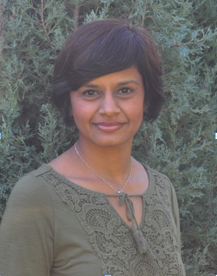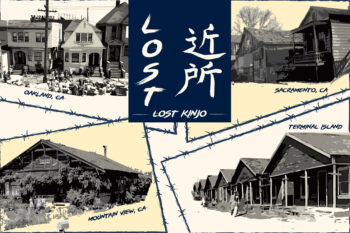By Sid Sharma
@SidBSharma
The first thing you notice about Simi K. Rao is that she conveys her ideas with a gentle patrician voice that lingers softly on vowels. “I always wanted to be a physician,” she tells me, carefully weighing each word. “But at the same time, I had this creative urge that somehow got lost because of professional obligations.”
Indeed, these obligations are quite heavy – Rao is a medical doctor by day. Thankfully for us, she always has an iPad handy and is ready to jot down her ideas, which form the basis of her novels and stories. I chatted with her to explore this tension between the two competing callings in her life and what it means for her craft. More than that, however, I wanted to understand how she was able to write The Accidental Wife with such a strong sense of authenticity and Indian American identity.
It must be said that it is a rare thing to be an Indian American author. Perhaps this is a statistically inaccurate statement, but it sure doesn’t feel like we, as a community, pump out fiction on an assembly line. Don’t get me wrong; plenty of Indians living in India produce first-rate fiction. But I suppose they do not have the immigrant mentality of survival at all costs. The received wisdom from our parents goes like this: Desis are survivors, if anything, and we must become doctors or engineers to provide for ourselves in a strange and unforgiving place. How on Earth does one have the stamina to write after a long, hard day at work?
LATEST STORIES
“You need to be sincere,” Rao says, particularly emphatic on this point. “Sincere in what you want, your feelings and what you want to put down. It shows.” Not wanting to leave it there, she probes deeper. “I can read a book and really, really connect to what somebody’s telling me, and then I can read another book, and I know – oh, this is a bunch of bullshit.”
Rao carries this deference for truth with her in The Accidental Wife. The novel charts the course of an initially cold-hearted Indian American neurosurgeon, Rihaan. Pushed to marry by an insistent mother, he finds a bride in India through the Internet. But things are not always as they appear; identities and loyalties change, and Rihaan must navigate the tragedies and triumphs along the journey. While the plot might be fictional, the characters and places are vividly created and brought to life.
While speaking with her about her travels, I was amazed at Rao’s ability to describe the places that she had been to with such vivid detail. I have to think that this sort of attention to detail or sincerity of place must greatly inform her writing style. The sights and smells of New York, Delhi and even the emergency room are rendered accurately in her novels. Rao has lived and worked in many of these places, and that experience allows her to detail many of the worn features that natives will immediately recognize and appreciate. In our green-screen world where anything is synthetically ordered off a computer program, this is a welcome change.
Halfway into our conversation, I point out The Accidental Wife is also a pretty truthful exploration of Indian American masculinity. Sure, the title and packaging might stress other parts of the whole, but this was, to me, a novel about a young man growing up and confronting his responsibilities. Rao hints that I found some sort of hidden secret and pauses.
“You’re right,” she assesses in that way doctors do. “He’s not a momma’s boy, and he’s fairly independent. But at the same time, he’s tied to his family. You’re fighting a battle within yourself, you know? You love your parents, but at the same time, you don’t love them that much.”
She rightly identifies that it’s not just parental pressure. “TV sells you, or what ads sell you, are those certain, usual pictures or themes of couples, and you think ‘oh, it’s all nonsense.’ I thought that would be the perfect thing for Rihaan to think.” It’s a pretty important question – asking how a man finds that anchor between rebellion and submission whereby he feels deeply fulfilled.
Ultimately, however, this is an Indian American book. And so I had to ask about the “c” word – culture – and why it was so important to explore such a topic. Rao’s ambivalence toward a superficial understanding of the word is clear.
“Does it mean going to a Thai restaurant and eating Thai food, or is it more than that?” Rao the doctor then said, “In my profession, we encounter people from all backgrounds. Some people prefer not to be asked sensitive questions and especially by people who they don’t know. I felt like if I wrote a little bit about my culture and have people read it, they might understand our psyche so they might respect that better.”
I was coming full circle here. The doctor and writer are not so much fighting each other as feeding each other. The writer was not merely an escape valve for the doctor but needed the doctor in a profound way.
I suppose that most people are torn between obligation and desire. While such tension between what we want to do and what society has in mind is not particularly unique to the South Asian American experience, it resonates with us in a particularly deep way. And as Rao has shown me, the artist can not only exist caught in the pull between two uncompromising masters, she can thrive there – creating authentic literature that explores culture in a deep and satisfying way. Rao draws strength and purpose from the struggle and channels it into page after page of creation. What more can we ask of our artists?








